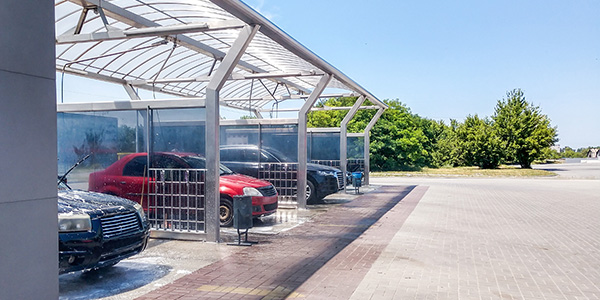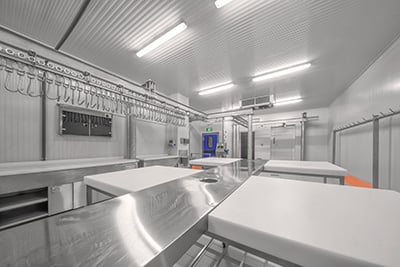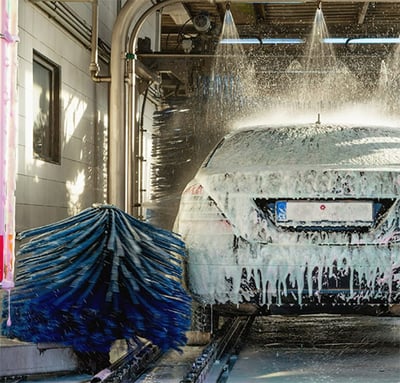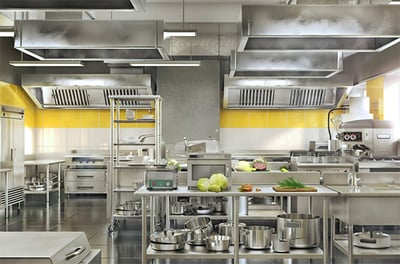 Before wood can be carved into tables, chairs, or your favorite piece of home décor, it first has to be dried to a moisture level of less than 7%. Besides the dry air, shops can fill with dust and debris, and high-impact machinery can rattle ceilings and floors.
Before wood can be carved into tables, chairs, or your favorite piece of home décor, it first has to be dried to a moisture level of less than 7%. Besides the dry air, shops can fill with dust and debris, and high-impact machinery can rattle ceilings and floors.
What kind of lighting is right for conditions as dry and harsh as these? Believe it or not, vapor-tight light fixtures would work like a charm.
Does that mean it’s the right choice for every application? Not necessarily. To understand why, first let’s clear up some common misconceptions about what vapor-tight lighting is and when it can come in most useful.
What Is Vapor-Tight Lighting?
The Misconception: All lighting is damaged by moisture; therefore, all light fixtures must be made vapor-tight.
The Reality: Vapor-tight lighting fixtures are manufactured for a specific purpose and are distinct from other fixtures.
 Not every light fixture exposed to moisture is vapor tight. For instance, residential porch lights or bathroom lights are typically no different from the fixtures in the rest of the home, despite being exposed to rain or steam from the shower.
Not every light fixture exposed to moisture is vapor tight. For instance, residential porch lights or bathroom lights are typically no different from the fixtures in the rest of the home, despite being exposed to rain or steam from the shower.
But in some cases, light fixtures come into prolonged contact with moisture, liquid, harsh weather conditions, or other chemicals and fluids. Such frequent close exposure will interfere with a standard light fixture, causing corrosion or impeding its ability to safely operate. That’s when vapor-tight lighting, which is specially sealed and gasketed for protection from environmental hazards, is a must.
When Should I Use Vapor-Tight Lighting?
The Misconception: Vapor-tight lighting is a nice-to-have, but it’s not actually necessary.
The Reality: For many applications, vapor-tight lighting offers both superior function and cost savings.
 Water, chemicals, and other liquids have a remarkable corrosive effect. (Just think of a stream eroding its way through a stone mountain.) When light fixtures come into regular, consistent contact with liquid, they can sustain serious damage, not just to the bulbs but to the fixtures themselves. And replacing these fixtures over and over gets very expensive, very quickly.
Water, chemicals, and other liquids have a remarkable corrosive effect. (Just think of a stream eroding its way through a stone mountain.) When light fixtures come into regular, consistent contact with liquid, they can sustain serious damage, not just to the bulbs but to the fixtures themselves. And replacing these fixtures over and over gets very expensive, very quickly.
Vapor-tight lighting should be used any time your light fixtures are regularly exposed to fluids. That could be in an environment like wash-down bays or car washes, but it could also mean outdoor lighting like open exposure parking garages. These fixtures can also be a great solution for spaces used for chemical or sanitation applications, as well as the preparation or packaging of consumer goods.
It’s worth noting, too, that vapor-tight lighting is also dust-proof. If your fixtures will be exposed to a large amount of dust, dirt or debris, like in our woodworking example earlier, a vapor-tight seal will help keep them protected. That means operations can continue uninterrupted, and you won’t be constantly replacing fixtures choked up with debris.
Finally, you should consider the physical stresses the light fixtures are under. If they’re subject to mechanical impact from external forces or objects, it may very well require a vapor-tight fixture to prevent internal damage. The ability to withstand impact damage — identified on specifications as the kinetic rating, or IK — is one of the unsung benefits of using a vapor-tight fixture.
When is Vapor-Tight Lighting Unnecessary?
The Misconception: The lighting itself makes no difference as to when vapor-tight fixtures should be used.
The Reality: Some types of lighting, such as LED arrays, require less protection than others.
The history of electric lighting is long and fascinating, and over the last two-hundred years we’ve seen significant changes, innovations and improvements. As a result of these innovations, we now have a market in which many different types of lighting are available, each with their own advantages and disadvantages.
This proves true even when it comes to questions around vapor-tight lighting.
In the past, vapor-tight fixtures were necessary when using fluorescent tube lighting. With the advent of LED arrays, however, the need for such protection is no longer as significant as it once was. That’s not to say you should never protect your LED lighting from moisture — rather, it’s important to look at the question on a case-by-case basis and consider the factors at hand.
Other Misconceptions About Vapor-Tight Lighting
 As hinted above, there really isn’t a “one-size-fits-all” solution when it comes to questions around vapor-tight lighting. Even where it’s an industry standard, the specific use cases matter, and it’s important that any analysis consider the real-world conditions at hand. Rules of thumb are helpful as a place to begin, but they aren’t universal truths.
As hinted above, there really isn’t a “one-size-fits-all” solution when it comes to questions around vapor-tight lighting. Even where it’s an industry standard, the specific use cases matter, and it’s important that any analysis consider the real-world conditions at hand. Rules of thumb are helpful as a place to begin, but they aren’t universal truths.
The other great misconception about vapor-tight lighting is that it’s always the better solution. After all, who wouldn’t benefit from a light fixture that can stand up to moisture, harsh chemicals and physical impacts? The truth, however, is that many applications do just fine with solutions that aren’t as expensive. Vapor-tight lighting is a good investment under the right conditions, but there’s no sense paying for extra protection if it’s genuinely not needed.
Help to Plan Your Next Project
Vapor-tight lighting is a great tool to fix certain problems. But like any tool, it has a time and a place. For some applications it’s an excellent solution, while for others it’s not worth the investment.
That’s why it’s important to consider these questions with a clear understanding of what vapor-tight lighting can actually do, and when it offers you benefits.
If you’re in the process of reimagining your light fixtures, whether for a renovation, an upgrade or a completely new application, we can help. Use our unique lighting design tool to envision your space and determine the lighting you need.


